
Autonomous Multi-Vehicle System Designed for Long-Term Arctic Studies
energy, ensuring continuous mission support even when sailing against ocean currents.Results of the study, published in the journal Applied Ocean Research, show that using the motion of a wind-driven sailboat to generate power from the turbine beneath the SWATH is a feasible way to support long-term Arctic Ocean monitoring missions.The UAVs use high-resolution cameras and sensors for mapping and navigation, while AUVs gather underwater data. The DJI Dock 2 system enables UAVs to autonomously land, recharge and redeploy, while an advanced underwater docking system allows AUVs to refuel and transfer data
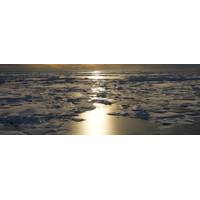
An Arctic “Beyond Recognition” Expected by 2100
infrastructure, ecosystems, vulnerable communities and wildlife.”Under 2.7 degrees Celsius of warming, the Arctic region is likely to experience the following effects:• Virtually every day of the year will have air temperatures exceeding pre-industrial temperature extremes.• The Arctic Ocean will be free of sea ice for several months each summer.• The area of the Greenland Ice Sheet that experiences more than a month of surface temperatures above 0 degrees Celsius will quadruple compared with pre-industrial conditions, causing global sea levels to rise faster.• Surface-level
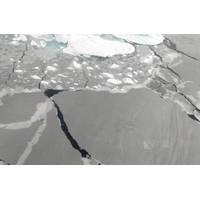
Arctic Sea Ice Could Reach Turning Point by 2027
to an international research team, including University of Colorado Boulder climatologist Alexandra Jahn and Céline Heuzé from the University of Gothenburg in Sweden. The team used computer models to predict when the first ice-free day could occur in the northernmost ocean.When the Arctic Ocean has less than 1 million square kilometers of ice, scientists say the Arctic is ice free.In September, the National Snow and Ice Data Center reported that this year’s Arctic sea ice minimum, the day with the least amount of frozen seawater in the Arctic, was one of the lowest on record since
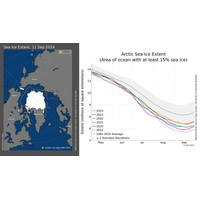
Arctic Sea Ice Reaches Seventh Lowest Extent on Record
is 12.4 percent per decade relative to the 1981 to 2010 average. From the linear trend, the loss of sea ice is about 77,000 square kilometers (30,000 square miles) per year, equivalent to losing the state of South Dakota or the country of Austria annually.“Every year brings something new for the Arctic Ocean,” said NSIDC senior research scientist Walt Meier. “This summer we saw very early ice loss in Hudson Bay, open water near the North Pole and a stubborn ice floe near the Bering Strait that persisted through the summer melt season. While it wasn’t a new record low, this year&rsquo

SAMS’ New Sensor Sheds More Light on Ocean Photosynthesis
expedition at 88° northern latitude and revealed that even in the Arctic far north, phytoplankton can build up biomass through photosynthesis as early as the end of March. At this time, the sun is barely above the horizon, so it is still almost completely dark under the snow and ice cover of the Arctic Ocean.Photosynthesis converts sunlight into biologically usable energy and thus forms the basis of all life on our planet. However, previous measurements of the amount of light required for this have always been well above the theoretically possible minimum.Fieldwork during the MOSAiC expedition deployed
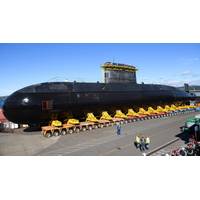
Canada Plans to Acquire Up to 12 Submarines
said.Canada updated its defense policy this year with a focus on protecting the Arctic and dealing with challenges from Russia and China. The procurement of submarines is a critical step in implementing that strategy, the defense ministry said in a statement.Citing global warming, Canada says the Arctic Ocean could become the most efficient shipping route between Europe and East Asia By 2050, thus raising the need to bolster maritime security."As the country with the longest coastline in the world, Canada needs a new fleet of submarines," Defence Minister Bill Blair said in the statement
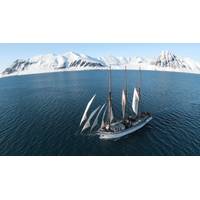
Scientists to Study the Arctic in a Wooden Schooner
internationally-renowned explorer, Jim McNeill, who has been running scientific expeditions to the Arctic for over two decades and has acted as a consultant for natural history programs such as the BBC’s Frozen Planet.Designed to collect critical scientific measurements from remote areas of the Arctic Ocean in order to build up an improved picture of the changes taking place due to climate change and other factors, Ocean Warrior will also help to ‘ground-truth’ data collected via satellites.For the first 10-day leg of the expedition (departing Svalbard on September 1 with a subsequent
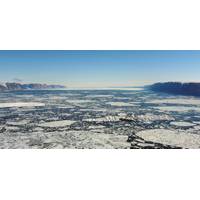
To Predict Future Sea Level Rise, We Need Accurate Maps of the World’s Most Remote Fjords
to its northeast, which has been more stable since at least the 1950s. Was it kept in place by a shallow fjord entrance keeping out warmer water?At the time, no ship had ever entered Sherard Osborn Fjord where Ryder Glacier drains, because the sea ice in that region is the toughest in the entire Arctic Ocean. Therefore, nothing at all was known about the seafloor. Ryder Glacier became the target for our next expedition with icebreaker Oden in 2019.Shielded from warmer waterThick ice in the narrow passage separating Ellesmere Island from Greenland made it hard to even get to Sherard Osborn Fjord. And
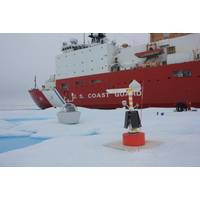
US Coast Guard Cutter Healy, Scientists Deploy Ice Stations
U.S. Coast Guard Cutter Healy (WAGB 20) crew and embarked researchers ventured onto a floe of multi-year ice for the first of three multi-instrument ice stations in the Arctic Ocean Basin late July and early August.As the Healy carefully approached and maintained position alongside an ice floe above 77 degrees north, the crew and a team of scientists, working in cooperation with the Office of Naval Research, (ONR) offloaded a diverse collection of equipment on to the floe carefully selected for its size and composition of multi-year ice.The objectives included the installation of two major instruments:
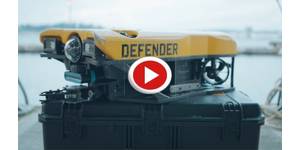

 February 2025
February 2025





